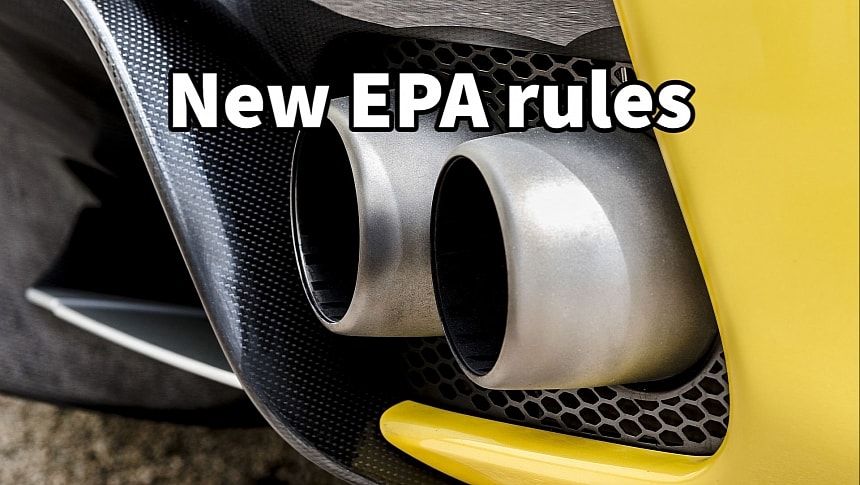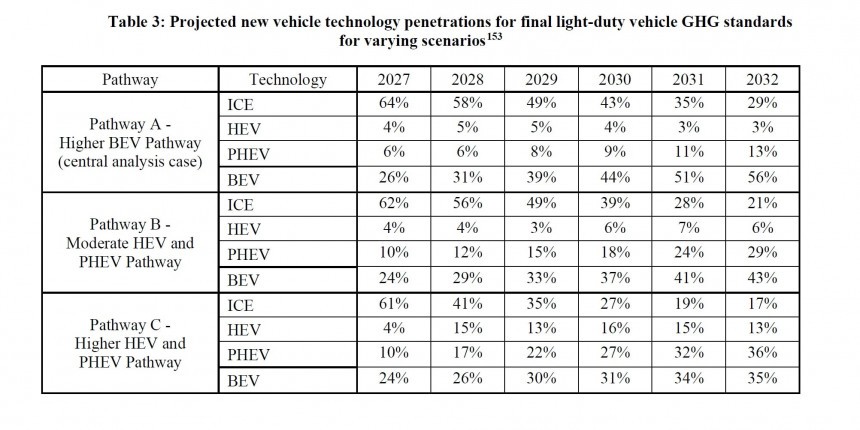Last year, the Environmental Protection Agency (EPA) set stricter emission standards for 2027-2032 vehicles to boost EV adoption. Following pushback from carmakers, the Department of Energy has announced more relaxed requirements. Instead of requiring 46-67% of light-duty vehicles to be electric by 2032, the new rules mandate only 35-56%, with plug-in hybrid vehicles (PHEVs) between 36% and 16%.
On Wednesday, the Biden administration announced new automobile emission standards that were less strict than those the EPA announced a year ago. Even so, the officials said the plan was the most ambitious to cut planet-warming emissions from passenger vehicles. The new plans came after carmakers expressed concerns about the proposed two-thirds of passenger cars becoming electric by 2032.
The easing of last year's rules is set to allow carmakers to meet federal standards for fleetwide fuel efficiency while they continue selling highly profitable gasoline-powered pickups and SUVs. The decision came after intense discussions with automakers who said they could not meet initial proposals for a much more aggressive EV transition. Under initial plans, electric vehicles should've reached 67% of all new cars sold by 2032.
To put things into perspective, only 8% of the new vehicles sold last year in the US were electric. The Detroit Three have produced even fewer EVs as a share of their overall sales, with Stellantis the biggest outlier. Under the new rules, the EV share of the new cars sold must reach 56% by 2032, according to the strictest scenario. The same scenario allows carmakers to sell 29% ICE vehicles, 3% hybrid cars, and 13% plug-in hybrid vehicles (PHEV). In the most relaxed scenario, electric cars will make up only 35% of the total sales, with ICE, hybrid, and plug-in vehicles reaching 17%, 13%, and 36%, respectively.
This gives carmakers more time to transition to EVs while continuing to sell highly profitable gas-powered trucks and SUVs. Although it applies to all carmakers selling vehicles in the US, the decision is a boon for the Detroit Three because of their heavy reliance on sales of large trucks and SUVs.
To convince the administration to lower the requirements, carmakers cited slower EV demand. However, the real reason is that legacy carmakers are losing a lot of money on every electric car they sell, and meeting the initial EV quota would've been too costly. The updated rules give them more time to transition to electric vehicles by slowing down the implementation of stricter pollution standards from 2027 through 2029. The rule ramps up by 2032 to nearly reach the level the EPA announced last year.
The EPA says that the new standards are designed to be technology-neutral and performance-based. This allows car and truck manufacturers to choose pollution-control technologies best suited for their customers while meeting environmental and public health goals. "Let me be clear: Our final rule delivers the same, if not more, pollution reduction than we set out in our proposal," EPA Administrator Michael Regan told reporters.
The new rules will avoid more than 7 billion tons of carbon emissions by 2055. They also provide nearly $100 billion in annual net benefits, including lower healthcare costs and fewer deaths. Other benefits include $60 billion in reduced annual costs for fuel, maintenance, and repairs.
The easing of last year's rules is set to allow carmakers to meet federal standards for fleetwide fuel efficiency while they continue selling highly profitable gasoline-powered pickups and SUVs. The decision came after intense discussions with automakers who said they could not meet initial proposals for a much more aggressive EV transition. Under initial plans, electric vehicles should've reached 67% of all new cars sold by 2032.
To put things into perspective, only 8% of the new vehicles sold last year in the US were electric. The Detroit Three have produced even fewer EVs as a share of their overall sales, with Stellantis the biggest outlier. Under the new rules, the EV share of the new cars sold must reach 56% by 2032, according to the strictest scenario. The same scenario allows carmakers to sell 29% ICE vehicles, 3% hybrid cars, and 13% plug-in hybrid vehicles (PHEV). In the most relaxed scenario, electric cars will make up only 35% of the total sales, with ICE, hybrid, and plug-in vehicles reaching 17%, 13%, and 36%, respectively.
To convince the administration to lower the requirements, carmakers cited slower EV demand. However, the real reason is that legacy carmakers are losing a lot of money on every electric car they sell, and meeting the initial EV quota would've been too costly. The updated rules give them more time to transition to electric vehicles by slowing down the implementation of stricter pollution standards from 2027 through 2029. The rule ramps up by 2032 to nearly reach the level the EPA announced last year.
The EPA says that the new standards are designed to be technology-neutral and performance-based. This allows car and truck manufacturers to choose pollution-control technologies best suited for their customers while meeting environmental and public health goals. "Let me be clear: Our final rule delivers the same, if not more, pollution reduction than we set out in our proposal," EPA Administrator Michael Regan told reporters.
The new rules will avoid more than 7 billion tons of carbon emissions by 2055. They also provide nearly $100 billion in annual net benefits, including lower healthcare costs and fewer deaths. Other benefits include $60 billion in reduced annual costs for fuel, maintenance, and repairs.








